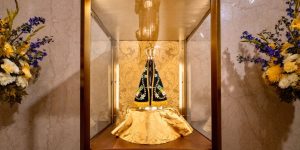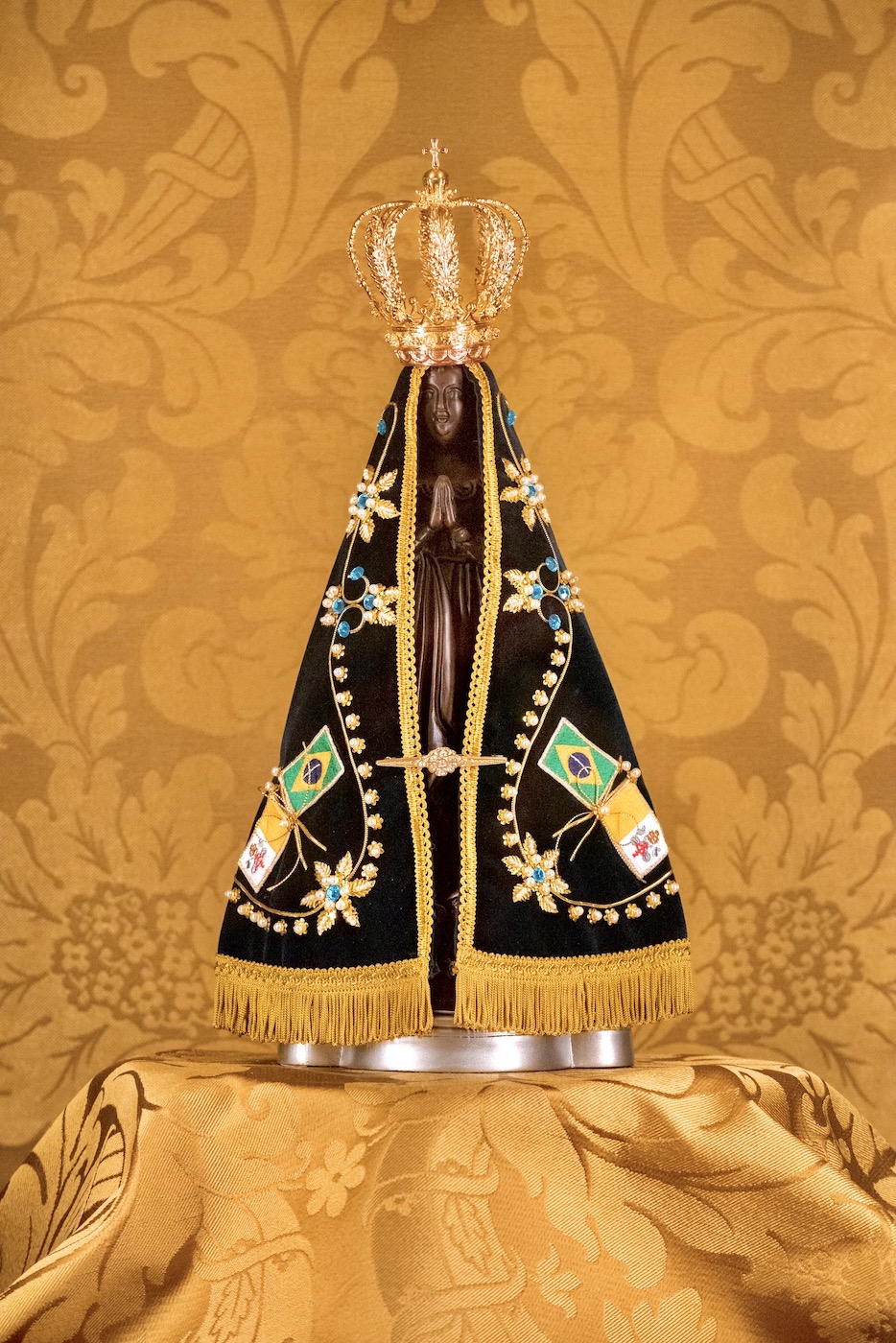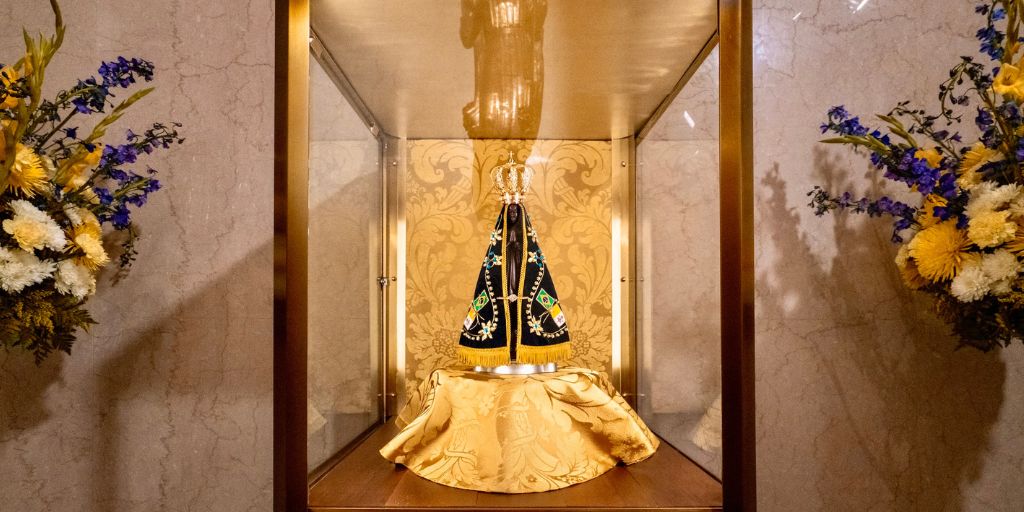
For Catholics, sacred art isn’t simply pretty pictures and sculptures; it directs our minds to contemplate the divine, illuminating eternal truths. Throughout the Basilica, you’ll find art that not only reflects the tenets of Catholicism, but art that relates to the celebrations of the liturgical calendar.
This month, we’re delighted to share the third post in our Walk Through Art blog series, highlighting the sacred art of the Basilica as it corresponds to important Church celebrations and moments in the life of the National Shrine. In this post, discover four art pieces we’re highlighting this September – from the Our Lady of Aparecida oratory to the Our Mother of Sorrows chapel.
The Our Lady of Aparecida Oratory
The newest oratory added to the National Shrine, the Our Lady of Aparecida Oratory was dedicated last year on September 14. Intricately carved from dark wood, the Basilica’s Our Lady of Aparecida sculpture is adorned with a deep blue mantle bearing the flags of Brazil and the Vatican, symbolizing her connection to both the country where her devotion originated, and the Catholic faith. Upon her head rests an imperial crown, symbolizing her queenship over heaven and earth. Over 7,000 pilgrims from across the United States and Brazil gathered to mark the historic moment when the patroness of Brazil was enthroned in the United States for the very first time.
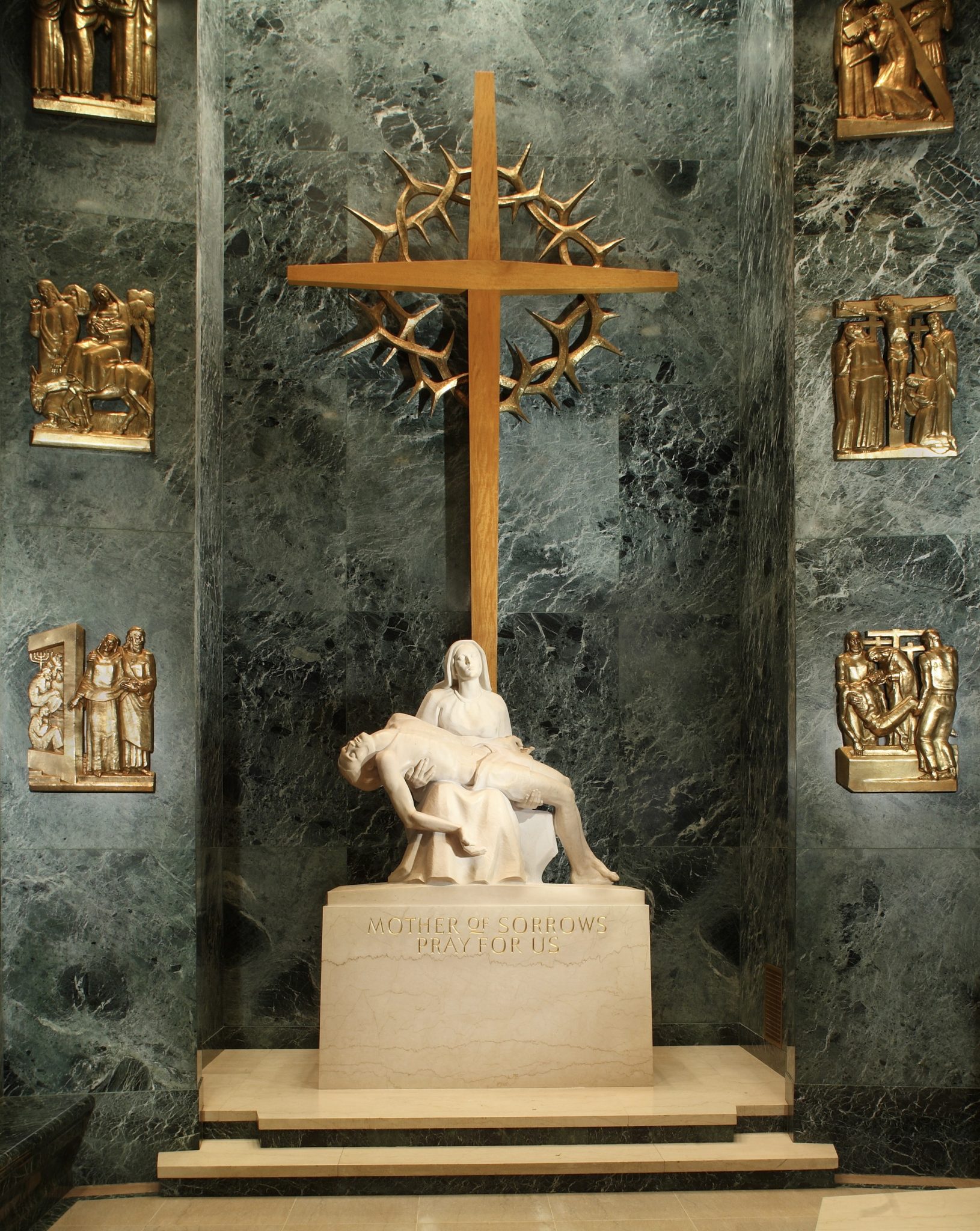 The Our Lady of Sorrows Chapel
The Our Lady of Sorrows Chapel
Each year on September 15, the Church celebrates the Memorial of Our Lady of Sorrows. Located in the Great Upper Church of the Basilica, the Chapel of Our Mother of Sorrows features a life-size marble sculpture of the Pietà, depicting the sixth of the Seven Sorrows: Mary holding Jesus as he is taken from the Cross. The other sorrows are sculpted in bronze and flank the Pietà. The chapel is a gift of the Slovak Union of the United States and Canada. Inscribed in Slovak above the altar is the text: “Our Mother of Sorrows, Virgin Mary, Patroness of the Slovak People, Pray for Us.”
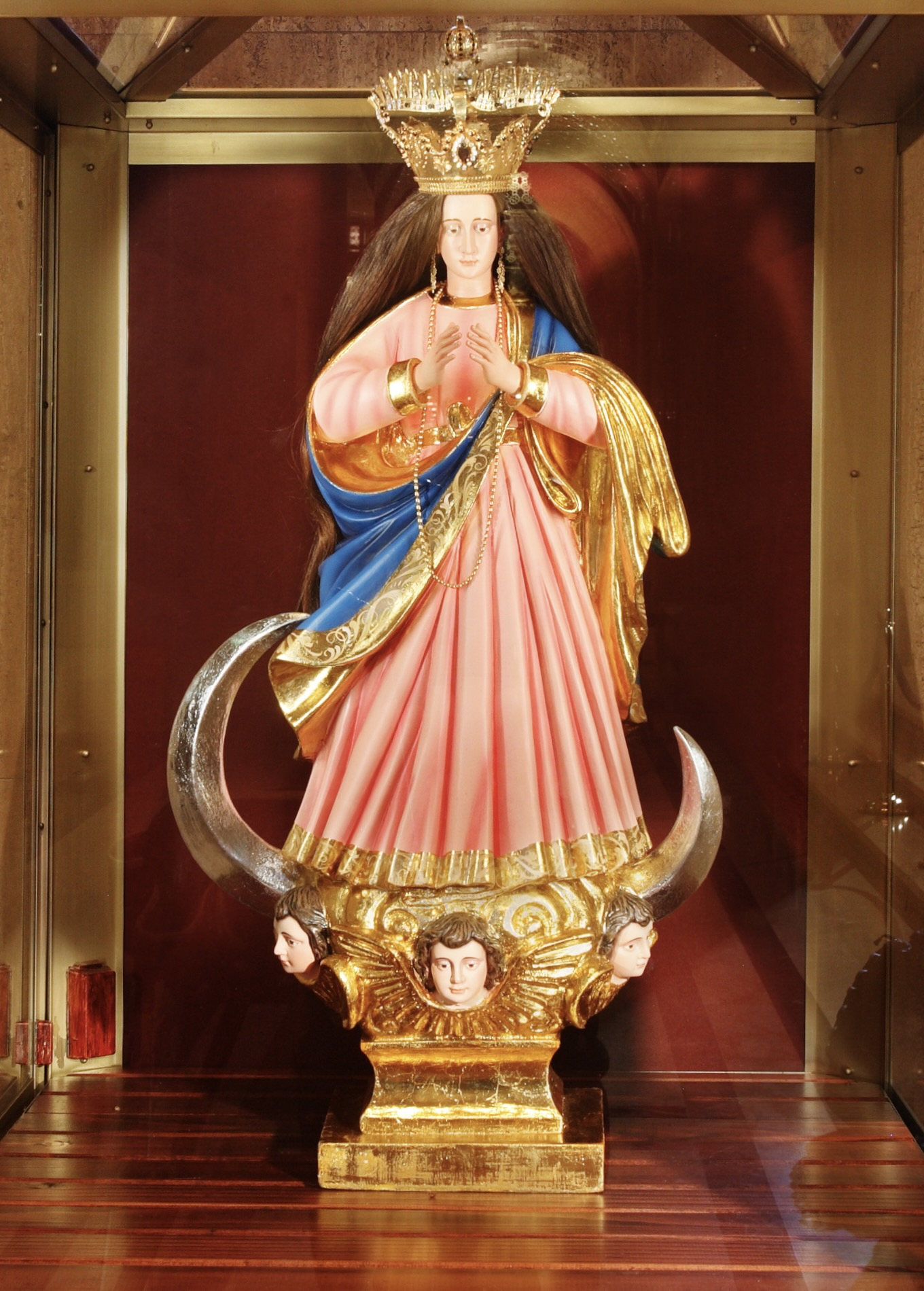 Our Lady of Camarin
Our Lady of Camarin
19 years ago, on September 17, 2006, the Our Lady of Camarin Oratory was dedicated at the National Shrine. Located in the Great Upper Church, the oratory features a statue that was hand-carved from the wood of a 300-year-old tree from the grounds of a monastery in Guam, where trees are grown solely for the purpose of carving statues like this one. With human hair and a porcelain face, this representation of the Madonna has a striking realism.
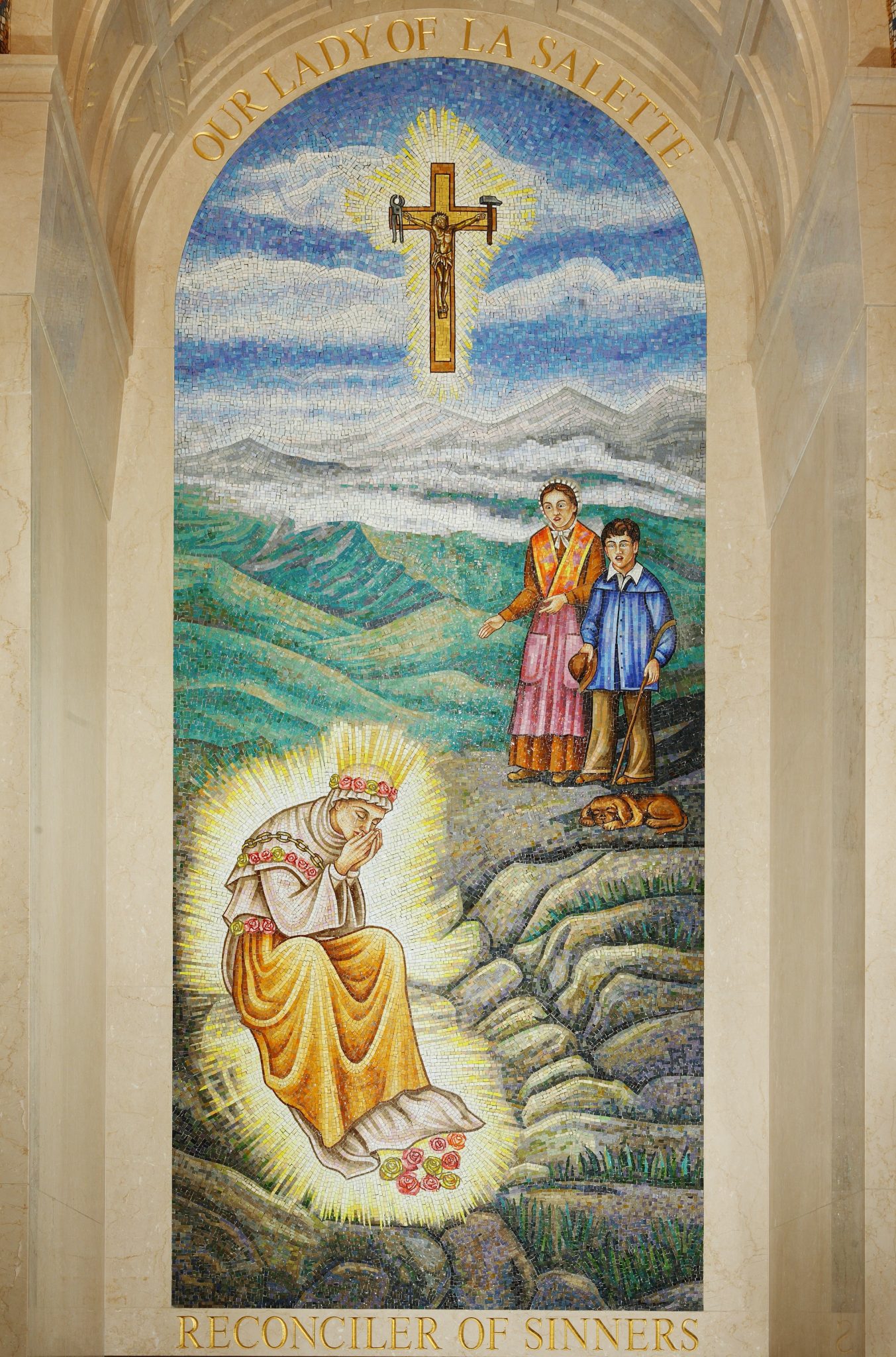 Our Lady of La Salette
Our Lady of La Salette
September 19 of this year marks the 179th anniversary of the Apparition at La Salette. At the Basilica, this devotion is honored in an oratory in the Great Upper Church, which features a vivid mosaic designed by J. Piercey Studios. The mosaic portrays two French children witnessing the apparition of Our Lady weeping upon the mountainside, surrounded by an orb of dazzling light. The crucifix which she wore around her neck is depicted above them, featuring a hammer and pincers at the ends of the horizontal beam behind Christ’s outstretched arms. While the hammer symbolizes sin and division, the pincers represent the missionaries’ work of reconciliation and combatting sin in the world. Today, that crucifix is known as the La Salette cross, and is the symbol of the La Salette Missionaries. The mosaic was dedicated on May 12, 2002.
Sources:
Rohling, Geraldine M., PhD, MAEd. The Basilica of the National Shrine of the Immaculate Conception: Guide and Tour Book. Washington, D.C.: Basilica of the National Shrine of the Immaculate Conception, 2018.
Rohling, Geraldine M., PhD, MAEd. Jubilee 2009: A Photographic History of the Basilica of the National Shrine of the Immaculate Conception.

